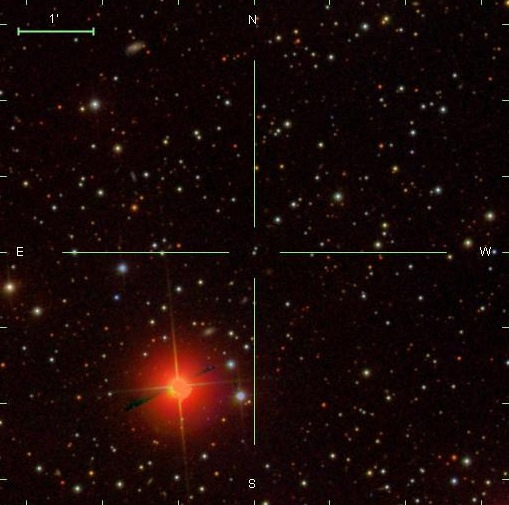Super speed star will help to study the dark matter

Artistic representation of the Milky Way and the superfast star, which flies away from our galaxy
Astronomers from the University of Utah discovered the superhigh- speed star LAMOST-HVS1 , which in many respects stands out among two dozen such strange stars that have been noticed to date (the first super-speed star was discovered in 2005). Firstly, it is the second in brightness among them. Secondly, the closest to us. Thirdly, it flies away much faster than ordinary superfast stars. These characteristics allow the use of LAMOST-HVS1 as a tool for scientific measurements.
LAMOST-HVS1 moves at a speed of about 620 ± 10 km / s relative to the solar system and about 477 ± 10 km / s relative to the center of our galaxy. Interestingly, scientists estimate her age to be only 32 million years old, which can be called infancy by stellar standards.
LAMOST-HVS1 is approximately 42,400 light-years from Earth and 62,000 light-years from the center of the galaxy. Although she managed to fly quite far away, the star still represents an exceptional value for science. Most importantly, it will allow to verify the theory of the existence of dark matter halo around the galaxy.
')

Photo of the super-speed star found among the shots of the Sloan Digital Sky Survey
Dark matter halo is a hypothetical component of a galaxy that surrounds a galactic disk and extends far beyond the visible region. According to the calculations of scientists, the mass of dark matter in the halo should exceed the total mass of the visible galaxy. Although dark matter, by definition, cannot be observed directly, we can judge its presence by some specific interactions with other objects, including interstellar gas and individual stars. According to scientists, only 5% of the mass of the universe belongs to the visible substance. Another 27% is invisible (dark matter), and the remaining 68% is an even more mysterious dark energy, introduced into cosmology to explain the expansion of the Universe.
Drawing a trajectory around the galaxy, LAMOST-HVS1 will provide information on the effects of external forces on it, including a hypothetical dark matter halo.

The milky way and the approximate location of the sun
The diameter of the visible part of the Milky Way spiral galaxy is at least 100,000 light years. If you add a halo of dark matter, the diameter increases to 1 million light years.
Over the past decade, scientists have discovered about 20 superfast stars (hypervelocity stars), which for some unknown reason very quickly move away from our galaxy. One of the most likely versions is that the extremely large black hole in the center of the Milky Way, which also has not yet been confirmed, dispersed them. Nevertheless, the search for new superfast stars and the calculation of their trajectory can provide data on the presence of such a black hole and its characteristics. It is assumed that its mass is about 4 million times the mass of the Sun.
Source: https://habr.com/ru/post/222699/
All Articles